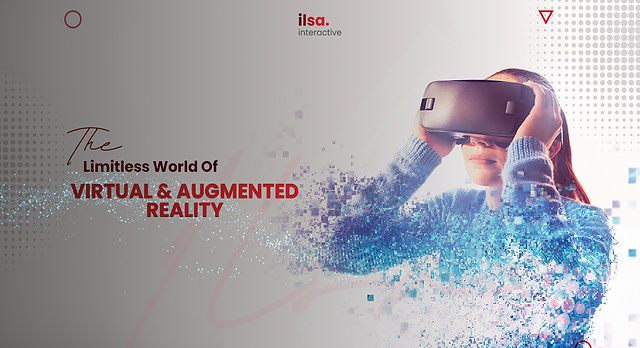The Limitless World of Virtual and Augmented Reality

To understand the potential that Virtual and Augmented reality possess we
need to understand how both of these technologies function, and how they differ from one another.
Virtual reality or VR creates an immersive environment that users can access through VR headsets. These
environments provide users with a 360-degree world which they can interact with through headsets. There
are many different uses for the VR world, most commonly used for gaming and entertainment, but it has
been utilized in other industries such as medicine, education, real estate, and marketing.
Similarly, augmented reality or AR works by projecting graphics that the user can see through wearable
tech such as AR glasses, but the most common way to access AR is through smartphones. AR much like VR
allows for many opportunities in different spaces, like marketing, gaming, manufacturing and healthcare.
Understanding How Virtual Reality and Augmented Reality Work
Firstly talking about Virtual reality, the way it functions is by using
computer technology creating a simulated environment with which the users can interact. Users can move
around freely, and interact with the environment in these digital worlds. Different software and
hardware work together in unison allowing the VR worlds to function. The combination of hardware and
software allows the virtual world to be displayed in front of the user’s eye. Sensors in the VR headsets
and compatible controllers allow for tracking of the user’s movements which is then shown in the virtual
world, if the user moves their right hand then in the VR world their right hand will move similarly
because of the sensors in the controllers. Similarly, the software will generate an image of the user’s
body part moving which they will be able to see. The software will also be responsible for generating
the user’s surroundings, audio and other sensory inputs creating an extremely immersive experience.
Augmented reality is a little different in the way it works. It functions by utilizing sensors that
allow it to analyze the surroundings of a user; leveraging the GPS, accelerometers, and gyroscopes that
are present in devices allows AR applications to have an understanding of the user’s surroundings. AR
will superimpose a digital image onto the physical world, which users will be able to see and interact
with through their phones, or wearable devices such as AR goggles.
The Use of Virtual and Augmented Reality
There are a few different applications where both VR and AR can be
utilized and help in certain industries. Some examples of the uses of AR are navigation, retail and
online shopping, gaming, and healthcare. AR has also been utilized in different industries for training
purposes. Augmented reality is being utilized by different industries mainly because it is something
that is accessible fairly easily by the majority of people. To access AR one simply needs to have a
smartphone and they will be able to access whatever is present in the AR world. The use of AR in
industries like healthcare is present in the form of providing information or assistance to surgeons or
physicians allowing them to make better decisions, or to carry out the procedure more accurately.
In terms of VR, there are many industries where the technology is being utilized such as the automotive
industry, healthcare, tourism, real estate, and gaming. Taking the automotive industry as an example, VR
allows for a digital version of a vehicle to be built, allowing engineers and designers to be able to
tinker with their ideas and to make digital prototypes before actually building one.
Technology like VR and AR are extremely useful tools that can help organizations in different ways, it
can help train employees, allow businesses to market their products, and help professionals in the
healthcare industry. ILSA Interactive believes that innovative technology should be implemented into
different projects, utilizing new technology in different ways looking to improve user experience.